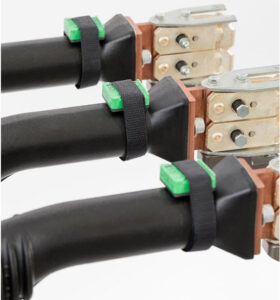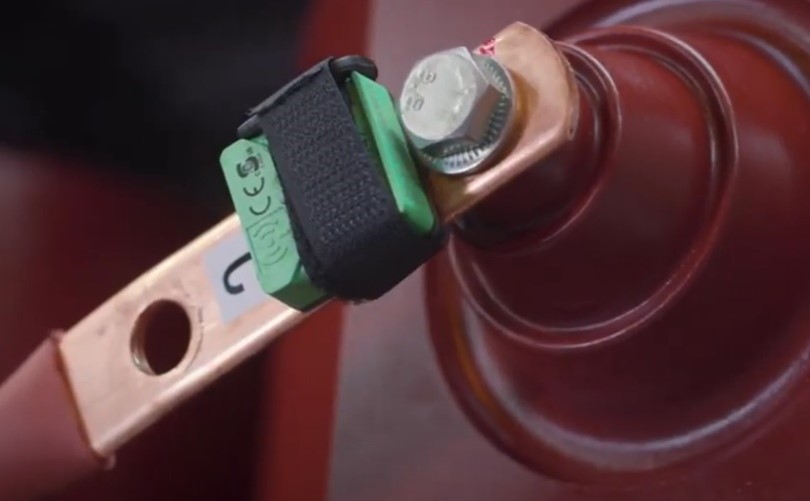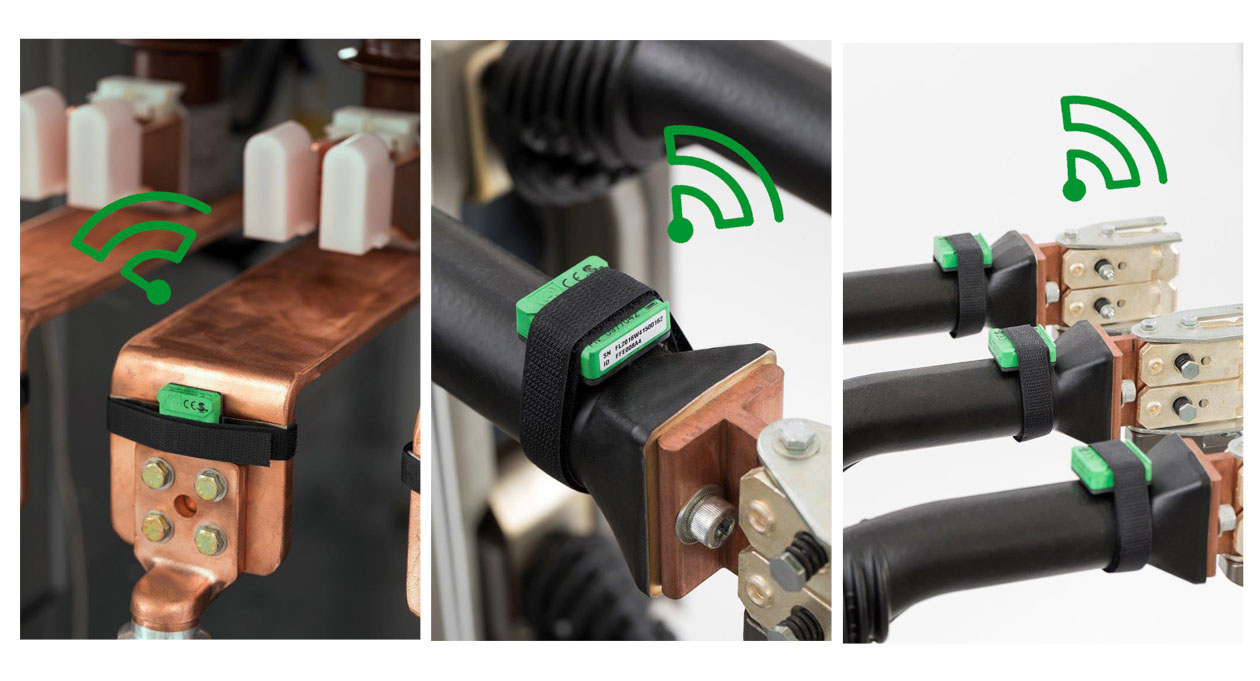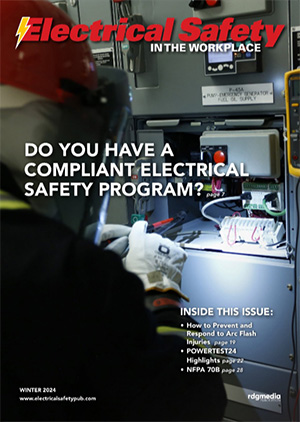Realizing the Value in Preventive Maintenance
By Jason Moore, CESCP, Contributor

The latest 2021 edition of the NFPA 70E standard recognizes the installation of permanently mounted temperature monitoring sensors as an adequate means of temperature monitoring in lieu of methods such as infrared (IR) thermal inspections. These devices are ideal for installation in equipment with high arc flash hazards, those that are interlocked and otherwise challenging to ingress, as well as equipment physically difficult to access such as overhead bus plugs.
While the value of preventive maintenance has long been known, it comes with an unfortunate financial reality and often requires facility outages impacting production. The National Fire Protection Association (NFPA) has historically identified these activities as Recommended Practice, however, effective January 16th, 2023, NFPA has progressed this document to be a STANDARD. NFPA 70B Standard for Electrical Equipment Maintenance defines the efforts that shall be made to properly maintain equipment throughout an electrical distribution system.
Difference in the Nomenclature
NFPA has published 415 documents identified as either guides, recommended practices, standards, or codes. What are the differences?
- Guide – A document that is advisory or informative in nature containing nonmandatory provisions. The document, as a whole, is not suitable for adoption into law.
- Recommended Practice – An NFPA standard similar to a code or standard but contains only nonmandatory provisions using the word “should” to indicate recommendations.
- Standard – An NFPA standard in which the main text includes only mandatory provisions using the word “shall” to indicate requirements and is generally suitable for mandatory reference by another standard or code or for adoption into law.
- Code – A standard that is an extensive compilation of provisions covering broad subject matter or that is suitable for adoption into law independently of other codes and standards.
Process for Implementation
NFPA 70B guides qualified persons through the assessment of equipment of a power system as well as the environment in which the equipment exists. Conditions to consider include:
- Equipment:
- Age
- Previous maintenance activities
- Criticality of equipment in relation to the production process
- Current condition
- Environmental:
- Cleanliness
- Temperature and humidity in a room, building, or area where equipment is located
- Exposure to water intrusion or contaminates including chemicals, byproducts of nearby production processes, dirt/dust, varmint, etc.

In this scenario, the panel with circuit breaker feeds a disconnect switch and then a motor. Arc flash hazard at disconnect switch is 2.21 cal/cm2 @ 18”.
The assessment will guide the qualified person in the development of the Electrical Maintenance Program (EMP) document, required by the latest NFPA 70B standard. The EMP should operate in conjunction with the facility’s Electrical Safety Program (ESP), required by the NFPA 70E standard. 70B contains a multitude of pertinent information including defining EMP persons (coordinator, preventative maintenance personnel, auditor), and it expands from the facility assessment to delineate which tasks shall be performed on which equipment and at what intervals.
Due to the wide array of variables in equipment integrity and environment, preventive maintenance tasks are likely to be due at different intervals. These tasks include periodic infrared thermal scans; de-energizing equipment to operate switches (3) times, vacuuming the equipment, ensuring proper torque of terminations, injection testing of breakers, lubrication of electrical and mechanical parts, among others.
The EMP will direct personnel in their maintenance activities, ensuring components are in optimal working condition, allowing them to function as originally intended, and in the manner as initially defined by the manufacturer. Regarding electrical hazards (shock and arc flash), assessments are to be performed and the hazards properly identified as directed by NFPA 70E. Results of this study are the product of the amount of fault current, time personnel may be exposed to the arcing event, and the distance these persons are from the arcing point. The primary determinant in a person’s exposure time in a fault event is the clearing time of the upstream Over-Current Protective Device (OCPD).
As an example, the arc flash hazard at a field disconnect switch associated with a motor may be identified as requiring arc rated Personal Protective Equipment (PPE) with a minimum 4 calorie rating. This determination would have been made based on the understanding of the time the upstream OCPD will take to clear the fault. If this OCPD has not been properly maintained, it is plausible that the device may not function properly. Personnel donning the minimum 4 calorie arc rated PPE thus may not be adequately protected from a potentially more severe arc flash hazard resulting in serious injury and/or death.

In this case, it’s the same equipment setup but note the upstream circuit breaker is poorly maintained and does not clear the fault as expected. Arc flash hazard at disconnect switch is 27 cal/cm2 @ 18”.
Related Recommendations
A simple intervention that may yield substantial value is for a qualified person to perform a facility walkthrough—ideally at monthly intervals. The intent of this walkthrough is not to open and inspect energized electrical equipment or otherwise expose oneself to electrical hazards. Instead, it is to rapidly identify signs of failure and/or defects. Issues that may be identified include but are not limited to:
- Unprotected openings in panelboards (missing circuit breakers or hole covers)
- Missing hole covers from conduits that have been removed
- Panel/compartment doors or access covers that are not properly shut and secured
- Missing mechanical fasteners from deadfront covers
- Missing equipment name and source of power tags
- Missing electrical hazard labels
- Damaged equipment
- Electrical equipment workspace not properly kept clear
- Poorly illuminated areas
Final Advice
Once energized, many recommendations and requirements related to electrical equipment take effect which can feel overwhelming to the users. This includes safe work procedures, preventative maintenance, identification of arc flash and shock hazards, and many others. Consider the following steps for compliance and ownership of a safe work environment:
- Install ALL electrical equipment per NFPA 70, ensuring proper short-circuit ratings as well as equipment labeling identifying the name, source of power, identification of hazards, etc.
- Maintain a digital twin of the power system in software such as EasyPower, SKM, or ETAP and at a minimum perform an incident energy analysis, short-circuit study, and a protective device coordination study.
- Maintain a robust ESP and EMP. Following these documents, proper training shall be provided to all personnel. Maintenance activities shall be performed at defined intervals.
- Perform annual audits ensuring safe work procedures (Lock-Out-Tag-Out /Control of Hazardous Energy) are accurate, equipment name tags and source of power tags are in place, and that all arc flash and shock hazards are properly identified.
- Ensure adequately rated, arc-rated, and voltage-rated PPE are on hand and properly maintained. ESW
Jason Moore, CESCP, is the Electrical Safety Mitigation Specialist for Thompson Solutions Group. Jason focuses on mitigation of electrical hazards—arc flash, coordination, and short-circuit, and develops Electrical Safety Programs and Electrical Maintenance Programs to promote a safer work environment for customers across North America. He can be reached at 605.940.3282 (www.thompsonsolutionsgroup.com).
Share on Socials!
Safety Through Technology – The Next Generation of Electrical Safety Measures
Changes to NFPA 70E® 2021 for Electrical Safety in the Workplace®
Flash Fire Protection Now Extends to Hands with NFPA 2112:2018 Certified Gloves
Leaders in Electrical Safety
• Aramark
• Bowtie Engineering
• Enespro
• Ericson
• I-Gard Corporation
• IRISS
• KERMEL, INC.
• Lakeland Industries
• MELTRIC Corporation
• National Safety Apparel
• National Technology Transfer
• Oberon
• Saf-T-Gard
• SEAM Group
Subscribe!
Sign up to receive our industry publications for FREE!







